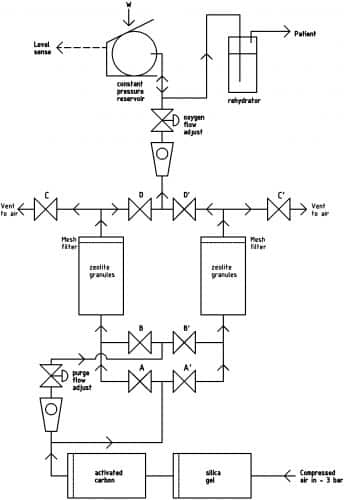With the second wave of covid-19 in India, the deadly virus has become uncontrollable, infecting a larger number of people than last year. Due to this, cases of patients suffering from lack of oxygen have gone up. Unfortunately, it has become very hard to meet the rising demand, creating a huge oxygen cylinder crisis.
On the other hand, preparing oxygen cylinders and transporting them to an area costs a lot of time and effort. Thankfully, a few innovative minds undertook this challenge and designed an oxygen concentrator. The best part is that it is open source and can be made with materials that are easy to find locally.
RepRap, an organisation involved in developing 3D printed parts for useful technologies such as robotics and control systems has come up with an oxygen concentrator design.

Courtesy: RepRap (link)
Working
The compressed air is inserted inside a chamber at the bottom. The air is cleaned and moisture removed with the help of silica gel. CO2 is removed with the help of activated carbon. Then the valves and chamber with zeolite absorb the atmospheric nitrogen that separates the free oxygen. Afterwards, the air enriched with oxygen moves to a constant pressure reservoir. With the help of a rehydrator, the moisture (that was initially removed by the silica gel) is restored. The opening and closing times of the valves are controlled by an Arduino microcontroller and a MOSFET.
For more information on how to design the project, check these links.






